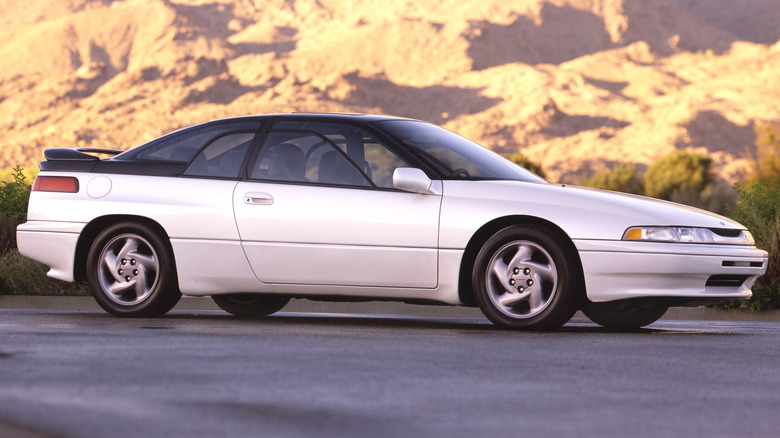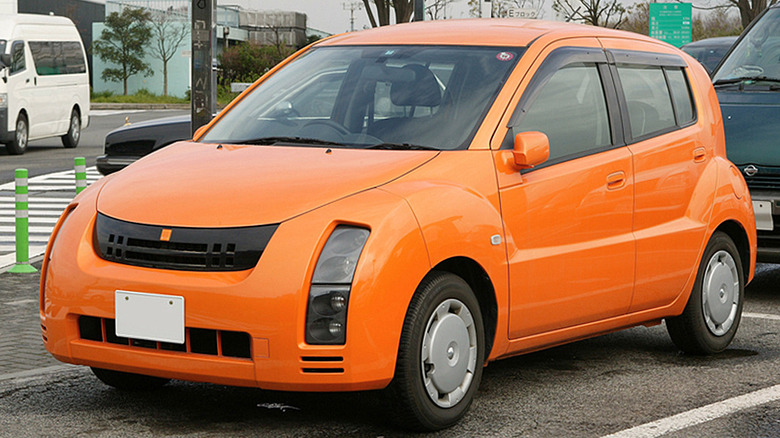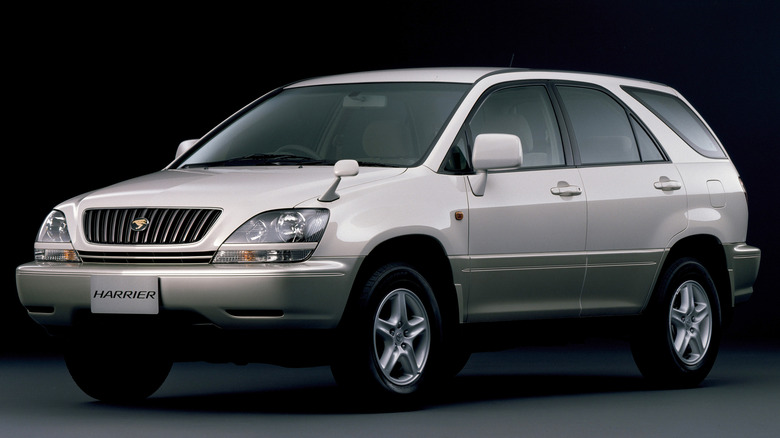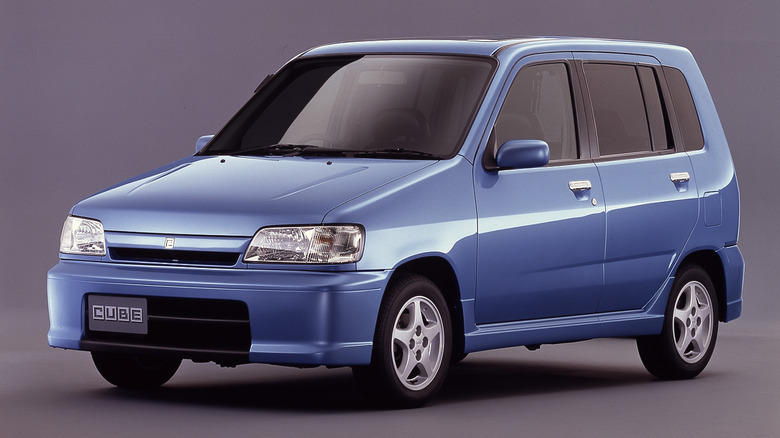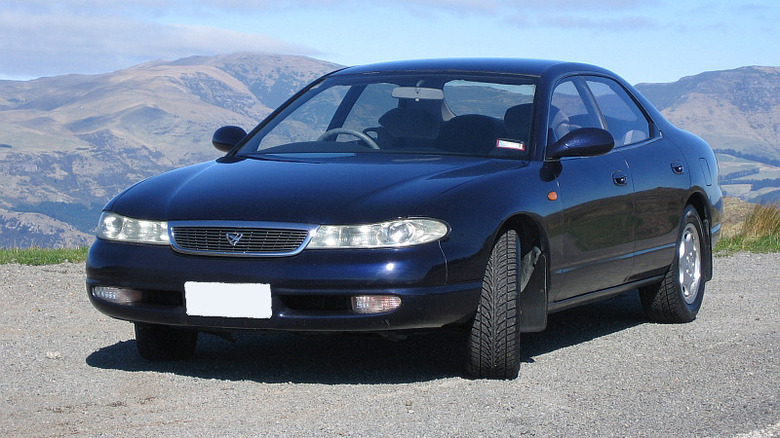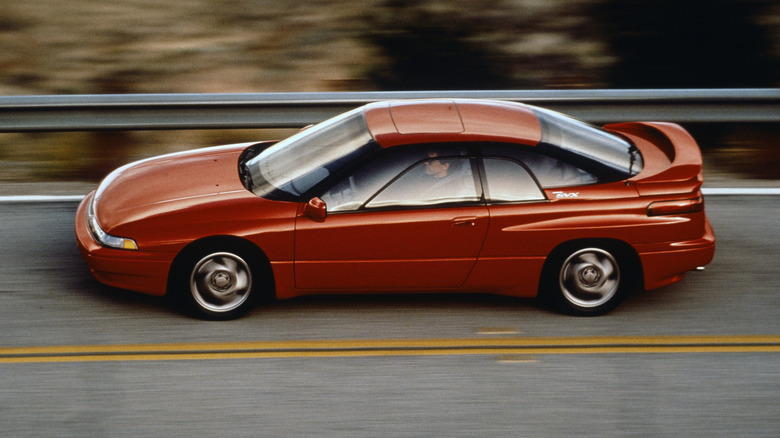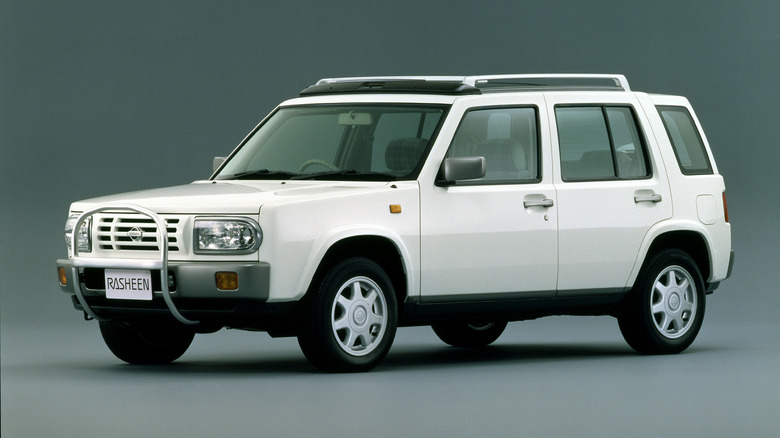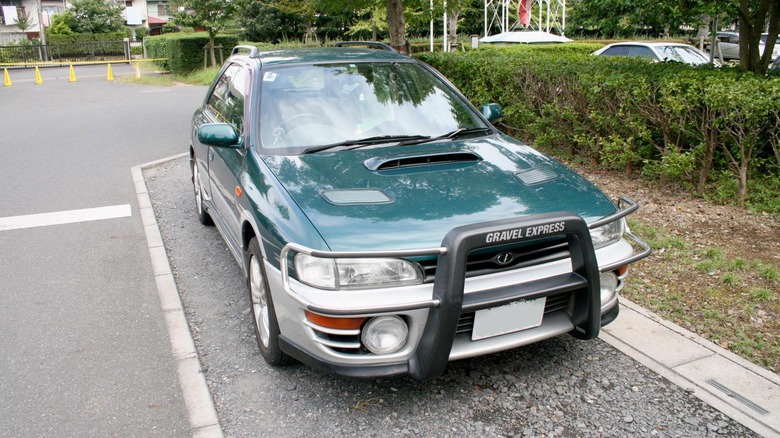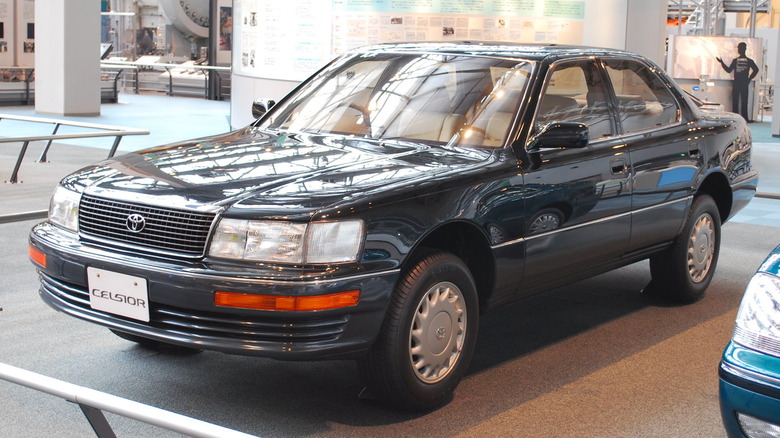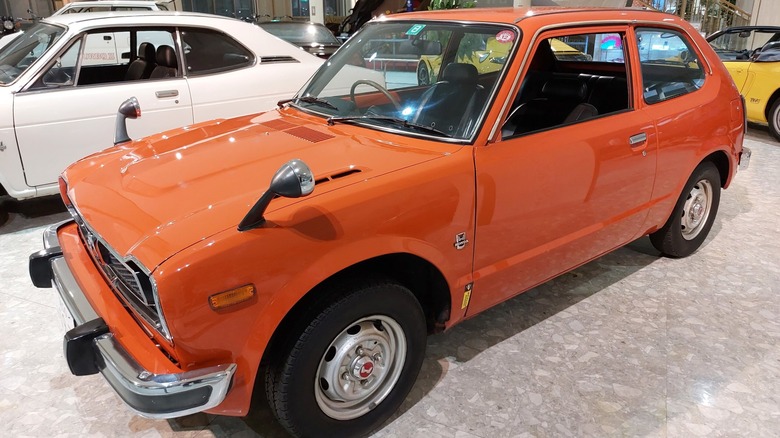10 JDM Vehicles That Were Ahead Of Their Time
Japan's status as one of the most innovative carmaking countries stretches back decades, and many of the global industry's recent big trends can be traced back to the Japanese domestic market. From infotainment systems that learn the preferences of their car's owners to models that would spawn entire segments, there are plenty of examples of trailblazing JDM cars. However, not all of them get the recognition they arguably deserve.
We've already covered some of the most famous JDM cars that could be considered ahead of their time, so here we're diving deeper into the archives to uncover forgotten models that pioneered many of today's most in-demand features. Some were sold outside of Japan under different names, with a few even achieving global recognition and acclaim. However, some have remained almost unheard of outside of the "Land of the Rising Sun," with only occasional used car listings and archived press releases to preserve their story.
WiLL Cypha
One of Toyota's most futuristic vehicles didn't bear its maker's name at all. Instead, it was marketed under the WiLL brand, a collaboration between several major Japanese manufacturers aimed at creating products that would appeal to younger buyers. The third and final car to be released as part of the project, the Cypha, was arguably the most ahead of its time. Today's car infotainment systems act as an all-in-one solution for a variety of media and connectivity functions, but when the Cypha debuted in 2002, its interactive infotainment was pioneering.
An onboard system called "G-Book" allowed drivers to access a wide range of services, from location-based restaurant recommendations to movies and music. A memory card was included with a national map of Japan for built-in navigation, and map updates could be bought on new chips available from convenience stores. Using the 6.5-inch touch panel, drivers could also read and send emails, read the news, or access in-car weather forecasts. Over time, a primitive AI system learned from driver feedback and could give personalized recommendations for restaurants and media.
Also innovative was the leasing system that allowed Cypha drivers to pay for their car based on how much they used it. Alongside a smaller base retention fee, the lease that drivers paid every month was calculated per kilometer. Odometer data from the car's computer was sent automatically to Toyota, which could then be used to calculate a bill.
[Featured image by Tennen-Gas via Wikimedia Commons | Cropped and scaled | CC BY-SA 3.0]
Toyota Harrier
The Toyota Harrier will be better known to American buyers as the Lexus RX. However, when the car launched in 1997, the Lexus brand was yet to be launched in Japan, and so it was sold under the Toyota brand. The Harrier was described by Toyota at launch as "a new type of luxury vehicle," which "combines the basic performance of a luxury sedan [...] with the functionality and off-road performance of a sport utility vehicle."
The Harrier was based on the same platform as the Camry, but featured a higher ride height and tougher SUV styling. The idea was still a novel one at the time, but fast forward to today, and luxury car-based crossovers are one of the most in-demand market segments. The success of the Harrier – and, in export markets, the RX – no doubt helped contribute to the lasting popularity of this new type of SUV.
The Harrier was offered with either a V6 or a four-cylinder engine, with both options mated to a four-speed automatic transmission. These were the same engines also found in Toyota's passenger sedans, and helped contribute to the overall car-like driving feel of the crossover. Previous luxury SUVs had always retained their rugged, rough-and-ready driving dynamics to some degree, but the Harrier offered buyers more familiar, refined handling while still delivering on a conventional SUV's looks and spaciousness. In doing so, it set the blueprint for many of the cars on the road today.
Nissan Cube
Despite its American market successor being crowned one of Slashgear's strangest cars of the '00s, the original Nissan Cube had proved very popular in Japan long before it ever made it stateside. The car debuted in January 1998 and within its first ten months on sale it had sold 100,000 units. Its popularity was down to its unique combination of interior spaciousness, relatively compact size, and zippy handling. The Cube drove like a car, but its boxy shape allowed its designers to squeeze the maximum amount of headroom and cargo capacity from its modest wheelbase.
Across its lifetime, the first-generation Cube sold around 400,000 units, with its successor arriving in 2003. Alongside its innovative design, the original Cube's method of sale also proved to be ahead of its time. The car was offered through one of Japan's earliest individual customer leasing programs, with drivers paying a brokerage an upfront fee and then paying monthly installments for a set lease period. Those payments were calculated by how much the vehicle would be worth at the end of the lease. While leasing cars this way has become increasingly commonplace today, especially in America, it was still a novel concept in late-'90s Japan.
εfini MS-8
The strangely named εfini MS-8 was conceived at the tail end of Japan's economic bubble when manufacturers had lots of cash, but little to spend. As a result, projects ended up being greenlit which wouldn't have made the cut in more cash-strapped times. The MS-8 is one such project, being the only unique car out of the five-model εfini range. The four others were essentially fancier versions of existing cars from parent company Mazda's lineup, but the MS-8 was designed especially for εfini.
It featured some unusual interior design quirks, like the dash-mounted gear shifter that removed the need for a center console. This gave the driver and front-seat passenger more legroom than in a regular sedan, but rear-seat passengers benefitted from the design quirks too. In particular, the front seat headrests were designed not to obstruct the rear occupants' view, something Mazda claimed was to ensure better conversation between the two rows.
However, the feature that would prove most ahead of its time was the large sunroof. Stretching behind the front seats and towards the second row, the sunroof was designed to create a light, airy feeling in the cabin. Over the years, cars with panoramic sunroofs have become more commonplace, but the upmarket MS-8 boasted one as far back as 1992. Sadly, the bursting of the economic bubble saw Mazda rein its spending significantly, axing its εfini lineup just a few short years after it launched.
[Featured image by VGBSpree via Wikimedia Commons | Cropped and scaled | CC BY-SA 3.0]
Subaru Alcyone SVX
It's safe to say that enthusiast opinions are mixed on the Subaru SVX. Commercially, the Subaru SVX was a complete flop, with Subaru losing money on every car it sold. Some blamed its styling, which can at best be described as polarizing. Others cite the car's early transmission problems as deterring buyers, and its high starting price certainly didn't help matters. It might be largely forgotten about by JDM enthusiasts today, but there's an argument to be made that the car was simply ahead of its time.
On paper, at least, it boasts all the right ingredients for a modern-day collectors' classic: Giorgetto Giugiaro-penned styling, a powerful six-cylinder turbocharged engine, and all-wheel drive. Its bizarre window-in-a-window might have turned heads at release, but the reason for it was simple: by splitting the standard glass pane in two, road noise in the cabin was significantly reduced when the windows were down.
The SVX was launched in 1991, and perhaps if it had been launched a few years later, its odd styling and unique features might have been more widely accepted. After all, the late '90s and early '00s gave birth to weird-looking sales hits like the Chrysler PT Cruiser and original Toyota RAV4. In the end, though, few buyers were willing to give Subaru's luxury coupe a chance, and it was axed having never sold particularly well either in Japan or abroad.
Nissan Rasheen
In today's car market, there are SUV or crossover models for almost every size of car. Huge, imposing full-size SUVs from the likes of Cadillac and Range Rover serve buyers on one end of the spectrum. On the other end, subcompact SUVs like the Nissan Kicks offer a higher seating position and rugged looks while remaining small and affordable.
Despite only appearing in America relatively recently, pint-sized crossovers like the Kicks aren't a new phenomenon in Japan. The country's strict size and power regulations incentivize carmakers to shrink their products to take advantage of lower taxes and fees, resulting in a handful of JDM models that proved to be ahead of the trend.
One of the earliest subcompact crossover SUVs was the Nissan Rasheen, which launched in 1994 and featured SUV styling on a small car platform. Its spec sheet wouldn't look out of place on many cars in the segment today: it featured a range of four-cylinder engines between 1.5 and 2.0 liters, four-wheel drive, and seating for five people. Its retro styling made it a niche hit in Japan, although it was never officially sold outside the country. Nevertheless, a handful of imports have made their way over to the U.S. in the decades since its release.
Subaru Impreza Gravel Express
A Japan-only version of the Impreza wagon, the Gravel Express was a precursor to the lifted wagon crossovers that make up a significant portion of Subaru's contemporary range. It boasted the 2.5-liter engine from the Impreza WRX, a lift kit, and a rear-mounted spare tire to prove it meant business. Bull bars up front completed the toughened looks. The model was first unveiled in 1995, and its marketing at the time proclaimed that its handling was inspired by the automaker's World Rally Championship car.
The timing couldn't have been better, as Colin McRae would go on to drive Subaru to its first championship title the same year. Despite the international recognition for its rallying efforts, however, Subaru would never launch its rally-inspired wagon outside of Japan. In the following years, Volvo's Cross-Country cars and Audi's Allroad lineup would prove to be niche hits in the same spirit, but Subaru has always remained the biggest proponent of all-wheel drive crossover wagons. The Gravel Express, it would turn out, would be the first of many for the brand, even if it's been largely forgotten about today.
[Featured image by 韋駄天狗 via Wikimedia Commons | Cropped and scaled | CC BY-SA 3.0]
Toyota Celsior
Created as a clean-sheet project to sit at the very top of Toyota's range, the Celsior debuted in 1989 as the brand's flagship vehicle. In export markets, it's better known as the Lexus LS 400. It was designed to give Toyota/Lexus a product that could compete with the very best luxury sedans in the class, and was given an unlimited development budget and a huge team of engineers and designers. Over 1,400 engineers and 2,300 technicians were reportedly involved in its development. The resulting car was unlike anything else the company had built before: it featured unprecedented build quality, class-leading comfort, and a refined ride.
The car's 4.0-liter 1UZ-FE V8 engine is considered particularly exceptional, being not only one of the most reliable Lexus engines ever built but one of the best, period. A high-profile campaign by Matt Farah even saw his example reach a million miles. However, the Celsior's initial success wasn't down to its unfailing reliability, but simply that it was an excellent car to drive for buyers at the time. It matched rivals from segment leaders Mercedes-Benz and BMW, catapulting the Japanese automaker from being simply an economy-focused mass-market brand to being a genuine contender in the luxury segment.
[Featured image by Mytho88 via Wikimedia Commons | Cropped and scaled | CC BY-SA 3.0]
Honda Civic RS
The first sporty variant of the long-running Honda Civic, the Civic RS was first unveiled in 1974. The Civic itself would prove to be a groundbreaking car, eventually becoming a sales hit both in Japan and around the world. The Civic RS took the standard car's appealing qualities – practicality, agility, and reliability, and added an extra dose of power. The base-spec car made around 59 horsepower, but thanks to its twin carburetors, the Civic RS boasted 75 horsepower. Not much by modern standards, but impressive for a Japanese car of the era.
The Civic's light weight made the car zippier to drive, without compromising on its practicality. Honda applies the same ethos to its Type R models today, although the first Type R to wear the badge wouldn't arrive until nearly two decades later. Honda reportedly built around 20,000 examples of the Civic RS between 1974-75, but it's thought that only a few dozen examples survive.
[Featured image by MikaPr65 via Wikimedia Commons | Cropped and scaled | CC BY-SA 4.0]
Nissan Prairie Joy EV
Lithium-ion batteries can now be found powering the majority of the world's EVs, but the first-ever EV to feature lithium-ion batteries has remained mostly unheard of outside of Japan. The Nissan Prairie Joy EV was first launched in 1996 and was the result of a pioneering partnership between Sony and the carmaker. It was offered only in Japan, but since consumer demand for EVs was non-existent at the time, only thirty examples were ever sold. All of them went to businesses, fleets, and research centers.
A common complaint about EVs is that they lose a significant portion of their range in colder conditions. However, the Prairie Joy EV proved its worth in icy temperatures by serving as a shuttle for Japanese researchers working at the National Institute of Polar Research in Norway. Its standard range was surprisingly long for its era too, with around 124 miles of juice available between charges. For context, the base-spec 2024 Nissan Leaf manages 149 miles.
The car's 74 mph top speed made it capable of highway speeds, and despite its bulky battery pack, it still featured the standard Prairie Joy's five seats and generous cargo capacity. However, with no reason for buyers to consider the added price and charging hassles that came with buying an electric vehicle, Nissan's first lithium-ion battery EV ended up as little more than a costly technical showcase for the automaker, even if it did enter limited production.
